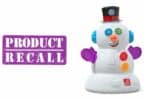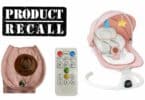
And while most of the technology is geared more towards adult convenience, children will be children. Children, of course, are inquisitive by nature. Unfortunately, that inquisitiveness can come with a very serious risk, especially where battery operated devices are concerned.
“We live in a world designed by adults for the convenience of adults, and the safety of children is often not considered,” said Dr. Gary Smith, senior author on a recent study involving the number of battery-related emergency room visits among children.
Conducted at the Center for Injury Research and Policy at Nationwide Children’s Hospital in Columbus, Ohio, the study found that the number of battery-related emergency room visits for children 18 or younger have doubled over the last twenty years, going from 2,591 ER visits in 1990 to 5,525 in 2009. The number of children swallowing batteries has also doubled during that time. Three-quarters of the ER visits for battery injuries involved children five or younger. One-year-olds were the most frequently seen of all children.
Eighty-four of all battery-related injuries involved button batteries – shiny, inconspicuous and an object that parents very rarely pay little mind to, but to children, these little objects are exactly the same size as the bite-sized food they often eat. These objects can be found in everything from toys and remote controls to watches and calculators, but adult products are where most of the batteries are coming from. According to the study, only 29% of all battery injuries involved batteries from children’s toys.
In light of the recent data, the Nationwide Children’s Hospital is urging manufacturers to change the design on ALL battery operated products to help reduce the risk of battery-related injuries to children. Creating child resistant locking systems on battery housings or designing the product to require a screwdriver to access the battery compartment are a couple of the changes they’re suggesting. But the responsibility shouldn’t rest solely on the manufacturers’ shoulders. We, as parents, need to take responsibility as well.
When baby proofing our houses, many of us fail to recognize just how dangerous batteries can be. And by not recognizing the full danger, we fail to protect our children. If lodged within a child’s throat, a battery can actually produce an electrical current and burn a hole in surrounding tissue.
“When a button battery is swallowed and gets caught in a child’s esophagus, serious, even fatal injuries can occur in less than two hours,” said Dr. Gary Smith.
But a battery doesn’t have to be lodged to cause damage. Once in the digestive system, it can create a toxic and deadly situation in the digestive tract. This too can become fatal in a very short amount of time. We need to take our own preventative measures and protect our children from these potentially fatal items. The Nationwide Children’s Hospital recommended that parents:
- Use tape to secure battery compartments on household products and devices.
- Store loose batteries and products with removable batteries out of reach.
- Be aware of battery-operated devices when visiting the homes of friends or family members.
Related Articles:
- Toddler Is Recovering In Hospital After Swallowing A ‘Button Battery’
- RECALL: 1,737 Comfy Carry & OnBoard35k Infant-Safe Seats Due to Base Issues
- Active Video Games May Provide Benefits to Children with Cerebral Palsy
- Researchers Link Kids’ TV Time to Unhealthy Food Choices
SOURCE
Image credit: design56 / 123RF Stock Photo






